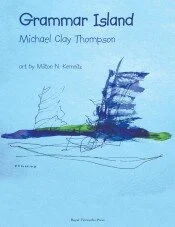On this page: Curricula | General Resources
composition
📚 Brave Writer. If your aim is to nurture capable, creative, and eager writers, then Brave Writer is a wonderful choice. Julie Bogart, homeschool veteran and professional writer, puts it this way: "Kids are tremendously interesting people, even the ones who write poorly. My goal is to help you do your job to draw out the fascinating mind life of your children so that you can capture those precious thoughts in writing." Visit the website to learn more about Brave Writer's positive, affirming philosophy, and to browse the excellent online class offerings and home-based curriculum materials. Regardless of whether you choose to use the program, it's worth reading Bogart's The Writer's Jungle, which shows you how to "become an effective writing coach while nurturing your children's creative impulses." Very highly recommended. – All
📚 WriteShop. This company’s Incremental Writing Program extends from Kindergarten through High School. Manuals provide extensive support and advice for how to teach writing, as well as outlining a progressive process for each project. Especially at the younger levels, the focus is on fun activities that take the anxiety out of writing. The elementary curriculum includes projects in many genres (mysteries, science fiction stories, and nonfiction reports). Middle and High Schoolers tackle descriptive, expository, narrative, and persuasive compositions and essays. From the publisher: “We understand the challenges of teaching writing. That’s why we’ve created materials that teach your child how to write—and show you how to teach. Whether your children are very young or well into their teens, WriteShop’s step-by-step lessons will help you introduce and review the building blocks of the writing process.” – All
📚 MCT Language Arts by Michael Clay Thompson. If you're looking for a work-intensive, all-in-one Language Arts curriculum, then this program may be for you: "These exciting and demanding books are phenomenally successful both as stand-alones and as part of a longer term, progressive English Language Arts curriculum." At the core of the program is the grammar series, but the full curriculum incorporates writing instruction. Levels 1-7 cover Elementary and Middle School Language Arts. – Elementary • Middle
general resources
📖 The Creative Writer by Boris Fishman. This four-level creative writing program offers valuable direction for your budding author or poet. "Breaking down the elements that go into successful imaginative works, The Creative Writer leads aspiring writers through the skills needed to construct each. The assignments, designed to make students more aware of language and more confident in their own ingenuity, build on each other until beginning creative writers have successfully created their own stories, poems, and essays."
📖 STEM to Story: Enthralling and Effective Lesson Plans for Grades 5-8 by 826 National. This unusual interdisciplinary middle school program merges scientific discovery and writing: "These quirky, exploratory lessons will effectively awaken student imaginations and passions for both STEM and creative writing, encourage identity with scientific endeavors, and make both science and writing fun." Note that the program was developed to be used by teachers in a classroom; the activities will need to be adapted for a home setting. Also from 826 National, see Don't Forget to Write for the Elementary Grades and Don't Forget to Write for the Secondary Grades.
▶️ First person vs. second person vs. third person from TED-Ed. “Who is telling a story, and from what perspective, are some of the most important choices an author makes. Told from a different point of view, a story can transform completely. Third person, first person, and second person perspectives each have unique possibilities and constraints. So how do you choose a point of view for your story?” – All
▶️ How to make your writing suspenseful from TED-Ed. “What makes a good horror story? Hideous monsters and fountains of blood might seem like a good place to start, but as horror author H.P. Lovecraft wrote, “The oldest and strongest kind of fear is fear of the unknown.” Writers harness that fear not by revealing horrors, but by leaving the audience hanging in a state of suspense. Victoria Smith gives some tips for adding suspense to your writing.” – All
▶️ How to make your writing funnier from TED-Ed. “Did you ever notice how many jokes start with “Did you ever notice?” And what’s the deal with “What’s the deal?” There’s a lot of funny to be found simply by noticing the ordinary, everyday things you don’t ordinarily notice every day. Emmy Award-winning comedy writer Cheri Steinkellner offers a few tips and tricks for finding the funny in your writing.” – All
▶️ How to write descriptively from TED-Ed. “The point of fiction is to cast a spell, a momentary illusion that you are living in the world of the story. But as a writer, how do you suck your readers into your stories in this way? Nalo Hopkinson shares some tips for how to use language to make your fiction really come alive.” – All
▶️ How to build a fictional world from TED-Ed. Why is J.R.R. Tolkien’s Lord of the Rings trilogy so compelling? How about The Matrix or Harry Potter? What makes these disparate worlds come alive are clear, consistent rules for how people, societies–and even the laws of physics–function in these fictional universes. Author Kate Messner offers a few tricks for you, too, to create a world worth exploring in your own words.







